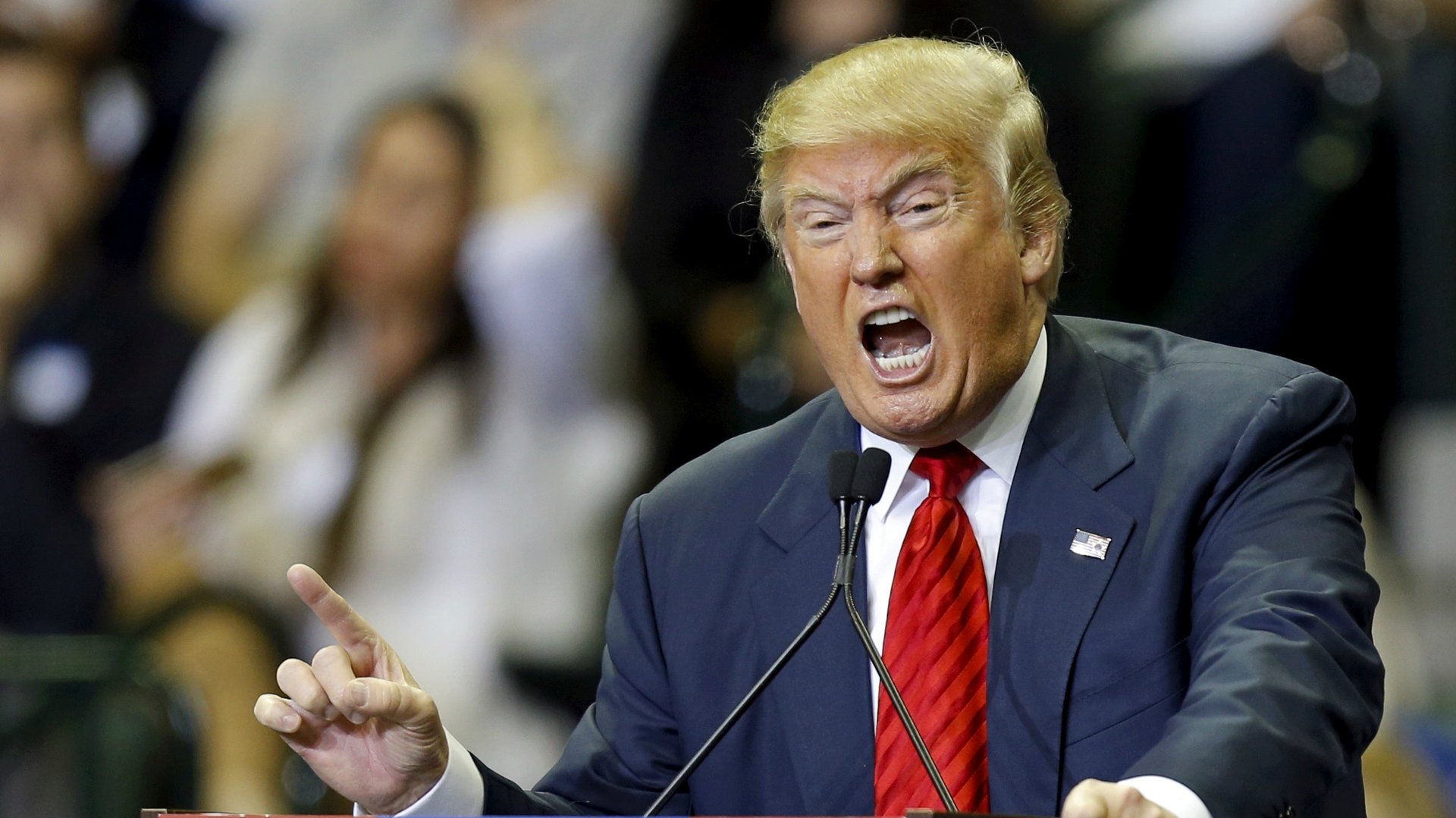A primer on how China’s currency works, for Donald Trump
Donald Trump’s most compelling moment on the debate stage this week was his passionate tirade about trade. There’s just one problem: his argument hinges on accusing China of devaluing its currency which China isn’t, in fact, doing.


Donald Trump’s most compelling moment on the debate stage this week was his passionate tirade about trade. There’s just one problem: his argument hinges on accusing China of devaluing its currency which China isn’t, in fact, doing.
Trump’s accusation isn’t just another fact-checking demerit. It reveals that he lacks a basic grasp of currencies, trade, capital flows, and, ultimately, the US economy.
Let’s start with how he answered the first question of the night, about how to bring back jobs:
You look at what China is doing to our country in terms of making our product. They’re devaluing their currency, and there’s nobody in our government to fight them… they’re using our country as a piggy bank to rebuild China, and many other countries are doing the same thing.
Moments later:
Our country’s in deep trouble. We don’t know what we’re doing when it comes to devaluations and all of these countries all over the world, especially China. They’re the best, the best ever at it. What they’re doing to us is a very, very sad thing.
This “devaluing” stuff sure sounds bad—and Trump’s right, in theory. When a country makes its currency cheaper than those of its trade partners, its exports become cheaper too. This supports the devaluing country’s export-dependent jobs, while putting foreign competitors selling pricier goods under pressure.
The falling Japanese yen (versus the dollar) in the 1980s, followed by devaluations by China and a slew of other Asian countries starting in the late 1990s, caused the US’s trade deficit to widen.
And there’s an even scarier aspect of devaluations that Trump didn’t even mention. The way a country debases its currency is typically by investing in another country, since demanding more of that foreign economy’s assets drives up the value of its currency. And since that partner country is usually the US, the main way to cheapen a currency versus the dollar is to buy US government bonds. You can see this in the growth of global reserves—much of which is composed of US Treasurys—in the past decade:
This drives down interest rates, which lets Americans borrow more money more easily, even as their wages stagnate. As they take out mortgages to buy houses, home values soar, making people feel wealthier, even though they’re not actually making more money.
And so, the binge-buying of US Treasurys by China and other countries was a major factor inflating the US housing bubble, which triggered the global financial crisis. This point is really the mother of all China-bashes. The fact that Trump hasn’t wielded it suggests that he doesn’t understand it.
So, yes—chronic currency devaluation is not good. Had Trump been running for president in the late 1990s or early 2000s, his China diatribes would have been relevant. But in 2005, China finally gave in to US government pressure and started letting the yuan gradually strengthen against the dollar, allowing it to climb—in fits and starts—as much as 27% by the end of 2013.
Since then, however, China’s growth has slowed and debt crises have threatened to erupt, slowing the inflow of investment and, therefore, cooling demand for the yuan. In May 2015, the IMF said the yuan was no longer undervalued.
These days, if anything, the yuan is probably overvalued. As the Chinese economy has sputtered, investors have been yanking their cash out of China, putting downward pressure on the yuan. In order to prevent investors from dashing for the exits all at once—which would likely trigger a financial crisis—the Chinese government has been selling down its huge stockpile of reserve assets in recent quarters, making its currency more valuable than it would otherwise be, relative to the dollar.
But what about the yuan’s sharp devaluation in August last year? The Chinese government wasn’t deliberately trying to cheapen the yuan; the drop happened when the central bank changed the weighting of market forces underpinning the yuan’s value, in order to please the IMF. Having loosened their hold on the yuan, the market promptly pushed down its value (another signal that the currency may be overvalued).
In the past year, the central bank has periodically let it adjust to its market value (which usually means it has drifted down against the dollar), all while trying to keep things relatively steady. The fact that the Chinese government has been selling down its reserves at the same time—flooding the market with dollars and raising demand for yuan—is a clear indication that the yuan isn’t unfairly cheap, and therefore isn’t part of a plot to put American workers out of their jobs with an artificially cheap currency.
The deeper problem with Trump’s China rhetoric—as with his talk on taxes and regulation—is that it encourages the American people to blame all their grievances on a scapegoat. Economic revival doesn’t require tradeoffs, sacrifices, or slow-payoff investments, he tells his supporters. Beat up a few baddies, get them to stop doing this one thing, and suddenly America will be great again.